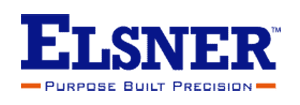When we talk about automation and digitalization and we strip back all of the features and functions and buzzwords, we’re essentially talking about technology systems and connectivity. We’re talking about technology that can be programmed, monitored and controlled to perform a process via a connected network of some sort. And while all of this discussion of the Industrial Internet of Things (IIoT), Industry 4.0 and Big Data may, at times, seem nebulous and hard to quantify, the events of the past year have brought to light the value of automation and digitalization in a way that is concrete and undeniable.
Consider where we would be if we did not have automation and digitalization in place when the COVID-19 pandemic took hold of the world in early 2020; if there were no connectivity to enable remote work and monitoring and control of machinery and manufacturing processes. How much worse would have the pandemic been in terms of damage to the global economy and lost lives? It’s hard to imagine that scenario.
So, while technology and connectivity opens up quite a few new challenges of its own – cybersecurity being perhaps the most prominent today – the benefits of connected systems have been realized in a very profound way over the past year and a half.
In the textile fiber space, automation and digitalization has been slow to come compared to other industries such as automotive manufacturing, for example, but innovation in this area is gaining momentum.
Modern machinery for producing fibers and textiles of various types is massive, complex and requires constant attention to optimize a given process. As such, the leading manufacturers of textile machinery and producers of fiber are focused on automation and digitalization as a competitive differentiator. Suppliers and producers are launching initiatives and whole divisions within their organizations to pursue innovation in this area, and the industry as a whole is catching up to the advances we’ve seen in other industries, such as power and energy and chemical and pharmaceutical processing.
As automation and digitalization concepts continue to drive innovation in the textile fiber space, line operators and others are being armed with real-time status updates on machinery health and process parameters. Fiber producers and downstream textile manufacturers are able to leverage information to optimize the efficiency of their processes from the initial input to the end product. And, as noted by Adrian Wilson in a recent IFJ article, “COVID-19 adds urgency in the move toward remote capability,” (Issue 5 2020, pages 14-16), innovators in the textile machinery space are now using technologies like smart glasses to send on-site production information live to remote sites to facilitate troubleshooting and operational activities in real-time.
“Everybody is now beginning to see the benefit of this,” said a source quoted in Wilson’s report. “For globalized companies, the data allows automatic reporting graphs from all plants to be generated and shared internally between companies of the same group anywhere in the world. This is allowing the efficiency of a group’s entire global operations to be increased and decisions to be taken. These are the two major areas where we have seen digitalization ramped up a lot in the last six months.”
Technofile or luddite, one must acknowledge the benefits of digitalization and automation are pretty compelling, and those benefits came in quite handy during the course of the pandemic and will figure significantly in fiber technology and related applications going forward.
Solution Center: Automation & Digitalization
ELSNER Automated Solutions help customers keep up with demands, even during challenging times
Want to save labor, boost throughput, insulate your production from disruption and improve quality? From nonwoven medical disposables to canister wipes to spiral wound filters, ELSNER automated solutions can help.
LEARN MOREThis content is sponsored by Elsner Engineering.
Your first choice in digital cutting
Zund makes any fiber & textile cutting application simple and productive with modular tooling, material-handling, and workflow solutions tailored to your needs.
LEARN MOREThis content is sponsored by Zünd.




